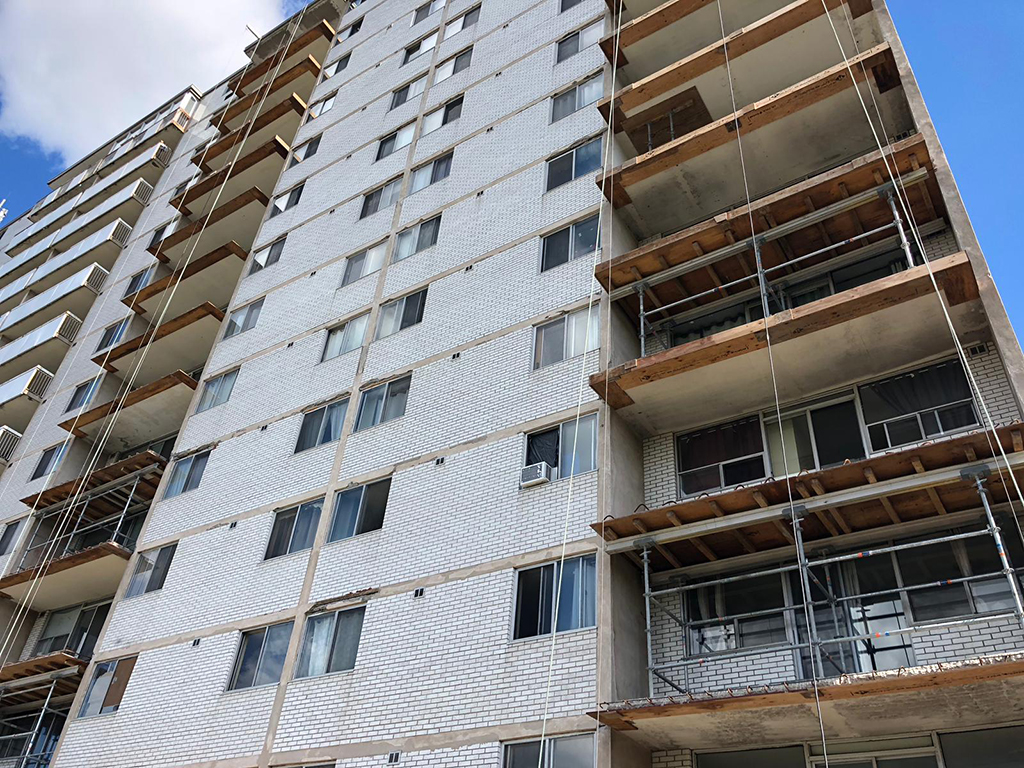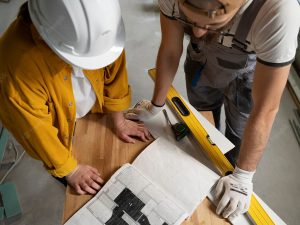Water causes different levels of damage to a building’s exterior. There can be cosmetic or superficial damage such as damage to brick or paint. Alternatively, it can lead to extensive damage like interior penetration. Essentially, when water damage occurs, building envelope restoration is required. Here we look at how to address water damage based on the materials used on the building envelope.
Exterior Paint and Coatings
Over the years the painting or coating of the exterior is exposed to the elements. As a result, the exterior can experience wear and tear that is superficial, only affecting the appearance of the surface. If that’s the case, building restoration companies like ours would remove the loose paint, power wash the entire surface, and then recoat or repaint the building. You need an in-depth understanding of different deterioration processes and protection requirements to ensure the proper processes are followed.
Proper assessment ensures we apply the right coating solution, avoiding simply “covering up” more serious damage below. A thorough water leak investigation ensures water damage hasn’t reached the interior.
Masonry Damage
If the masonry wall is damaged, brick replacement, as well as tuckpointing, is required. Tuckpointing removes and replaces deteriorated mortar. Masonry damage assessment determines if tuckpointing or complete replacement makes sense. Some possible solutions to address masonry damage include:
- Brick/block replacement
- Tuckpointing repairs
- Stonework repair and replacement
- Masonry helical-ties installation
- Through-wall flashing
Depending on the extent of damage and budget, it might be a good time to consider an exterior makeover. This will improve the integrity of the building while modernizing the appearance to increase value.
Concrete Delamination
When concrete delaminates, you’ll need localized concrete repairs. Concrete delamination occurs when the “paste” layer of the surface separates from the layer below. As a result, the concrete is unbonded between the surface and the concrete slab. Regular inspection of concrete is important, as it identifies delamination in the early stages before it spreads.
Proper Concrete Assessment
When we do the inspection, we look for issues such as cracking or inconsistent texture and colour. Damaged concrete is common for balconies for multi-dwelling buildings but can also occur in underground parking.
Concrete Rehabilitation
Concrete rehabilitation is the solution to repair concrete delamination. Rehabilitation can range in method based on the damage and location of the concrete. In the case of cosmetic damage, we address the non-structural properties and restore weather protection. In such cases, weather exposure is the culprit. We always eliminate worries of structural damage before starting any restoration work.
Protective Concrete Strategies
We recommend protective strategies based on the type of building, exposure risks and surface to avoid exterior water damage. An assessment of the overall building envelop and underlying systems can rule out the possibility of structural damage and may determine the need for cosmetic restoration only.
At WellDone we provide everything you need for exterior building restoration. From water leakage investigation to repairing new coating and painting makeovers, we can assist with your multi-unit properties, offices, and storefront leaks for both commercial and residential high-rise buildings across the GTA. Speak to our team today.



